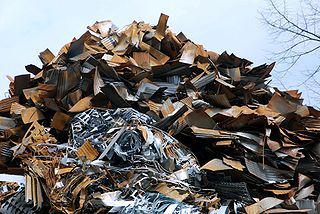From Guest Blogger Jenny: Pile of Toxic Garbage

Recycling occurs in countries such as China, India, Pakistan and Vietnam in an informal manner and they handle over fifty percent of the total amount of e-waste. E-waste is treated through shredding, burning and dismantling in rudimentary workspaces. The emissions that result from the recycling practises in these countries are heavily damaging to human health and environment cleanliness.
Countries which are developing and have rapidly growing economies insource e-waste from developed countries and their own internal consumption in addition. India currently handles over seventy percent of the e-waste and cell phone waste has increased over eighteen times. The informal recycling methods all pose significant health risk and exposure to toxic materials such as arsenic, mercury and lead at primary and second level. Valuable components such as gold are retrieved by burning waste in the open and the subsequent results in fine particulate matter which can cause serious nervous and heart diseases.
The process of electronic recycling is much more regulated by health authorities and are equipped with better waste recycling infrastructure. Electronic recycling units in Columbia, MO utilise R2 certified recyclers which not only reduce the health risks of recycling workers, but also recycle waste in a much more efficient fashion. E-waste gathering in developing countries is a different ball game. Guiyu, the largest e-waste recycling unit in the world, has occupants who suffer from digestive, neurological, respiratory and bone problems. Almost eighty percent of Guiyu’s children experience respiratory issues which have resulted from the noxious environment created through the recycling processes in Guiyu.
Immediate action is required to stem the growing strain that the planet electronic waste is putting on its resources and its atmosphere. It has been called by scientists commenting on climate change as a global time bomb. Electronic items require special circuitry in order to facilitate the flow of currents. These require semi-conductor and conductor technology which utilise chemicals and metals which are toxic if they spread to the food chain and are ingested by animals and humans. The Minamata incident is an example of how such metals can adversely affect human beings and cause widespread epidemics and ailments.
Developed countries feature health regulations and procedural laws which do not affect health as much as the ones in developing countries. Electronic recycling in places such as Chicago, IL or Columbia, MO feature very different industrial practices. Open air burning never used as the method can cause widespread physical reactions. The only problem is that there is not enough waste being recycled in developing countries in order to benefit from the additional infrastructure. The waste is more often than not transported to developing countries in the South East Asia and the practices there are not suited towards health and effect the population in a negative fashion for many generations.
Bio:
Jenny is in supply chain management who has been working in handling electronic waste for the past two and a half decades. She has been an outspoken enthusiast and supporter of electronic waste recycling in Columbia, MO often advising firms on what method to employ to deal with electronic waste.
